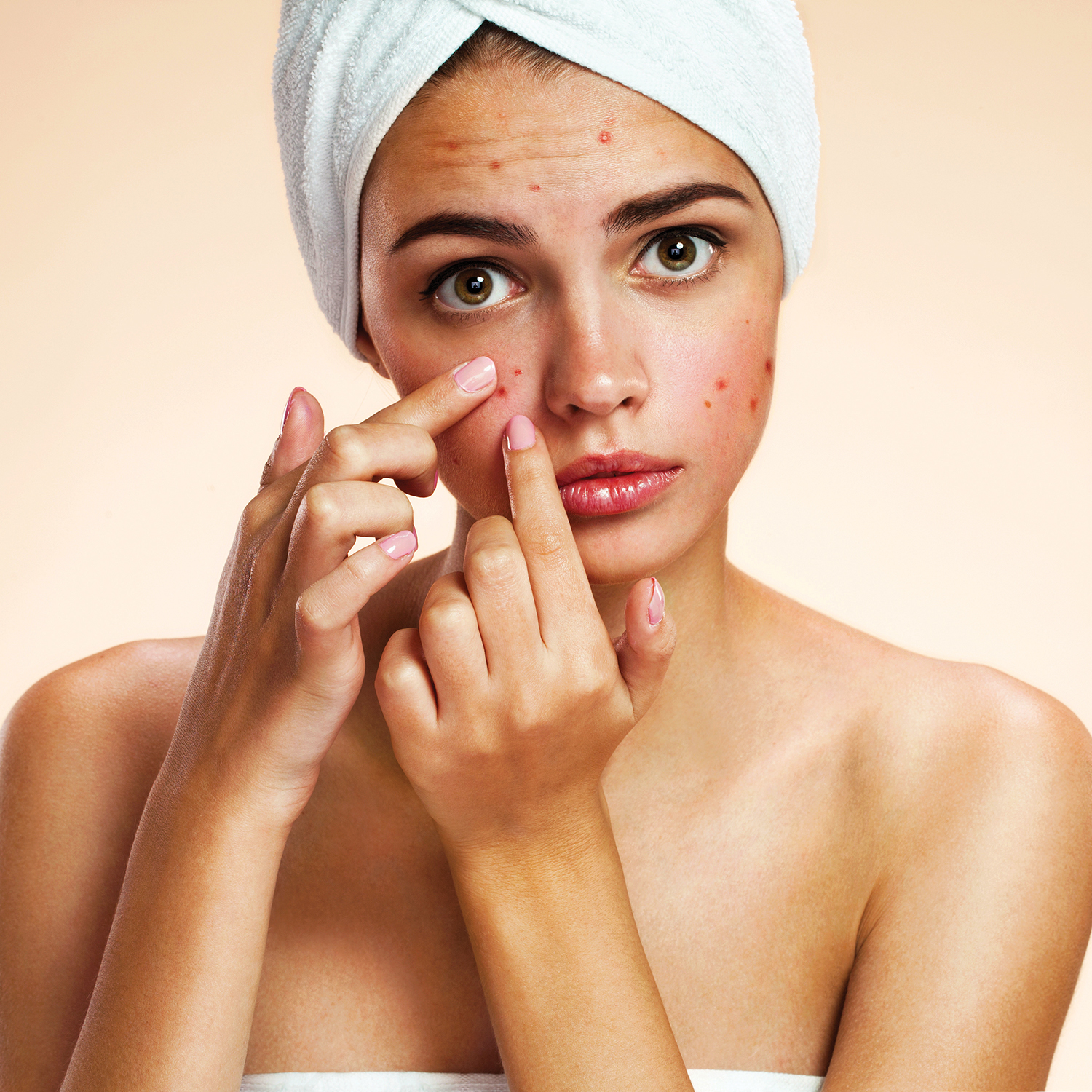
If you’ve ever gone to bed with clear skin and woken up with a massive, painful pimple on your face, you’re not alone. According to dermatologists from the American Academy of Dermatology, acne is the most common skin condition in the United States, affecting up to 50 million Americans annually. Although acne comes in many forms, including blackheads and whiteheads, the most severe type of acne is a pimple that develops deep in the skin, causing a red, swollen and painful bump. Fortunately, say dermatologists, there are ways to tackle this type of acne at home to alleviate pain and reduce the pimple’s size, swelling and redness.
“Although there are no overnight or immediate cures for acne, you don’t have to stand by and suffer either,” said board-certified dermatologist Meghan Feely, MD, FAAD, who maintains a private practice in New York and New Jersey and is an attending physician at Mount Sinai’s department of dermatology. “Make sure you use noncomedogenic and oil-free cosmetics, cleansers and sunscreens, and never try to scrub away a pimple, as this can further irritate it and make it worse.”
To treat a deep, painful pimple at home, Dr. Feely recommends the following tips:
- DO wash your skin before treating it. Use a mild, fragrance-free cleanser, and be gentle to your skin while washing.
- DO apply ice to reduce pain and swelling. As soon as you notice the blemish, wrap an ice cube in a paper towel and apply it to the area for five to 10 minutes. Repeat this two more times, with 10-minute breaks between icing.
- DO apply a product that contains 2 percent benzoyl peroxide to the pimple. Available at your local drugstore, this treatment will help kill the bacteria that causes acne. Make sure you apply a very thin layer, as using too much can irritate your skin. While using this product, keep in mind that benzoyl peroxide can bleach fabrics. Avoid letting the medication come into contact with your clothing and consider using white sheets and towels while using it.
- DO apply a warm compress once a whitehead begins to form. To make a warm compress, soak a clean washcloth in hot water; make sure the water isn’t too hot to avoid burning your skin. Then, apply the warm compress to the pimple for 10 to 15 minutes. Do this three to four times daily until the pimple releases pus and heals.
- DON’T pop, squeeze or pick at the blemish. Doing so can make acne more noticeable and increase your risk of infection, discoloration and scarring.
- DON’T apply toothpaste to the area. Toothpaste contains several ingredients that can clog your pores and irritate your skin, such as hydrogen peroxide, baking soda, alcohol and methanol.
- DON’T apply homemade treatments found online. There is plenty of advice online promoting “natural” remedies for acne; however, just because something is natural doesn’t mean it’s good for your skin. Even if a natural ingredient is good for your skin, it could be combined with another ingredient that could be harmful.
- DO visit a board-certified dermatologist to help treat the pimple and prevent future breakouts. If you need an urgent fix, a dermatologist can provide a cortisone injection, which can help the pimple go away in a few hours to days instead of days to weeks. Your dermatologist can also recommend treatments to help prevent future breakouts, such as a retinoid or antibiotics.
“Today, virtually every case of acne can be successfully treated, even severe acne,” Feely said. “However, not everyone’s acne can be treated the same way. If you have a lot of acne, or if your acne isn’t responding to over-the-counter acne medications after four to six weeks, make an appointment to see a board-certified dermatologist.”
These tips are demonstrated in How to Treat a Deep, Painful Pimple, a video posted to the AAD website and YouTube channel. This video is part of the AAD’s Video of the Month series, which offers tips people can use to properly care for their skin, hair and nails. A new video in the series posts to the AAD website and YouTube channel each month.





